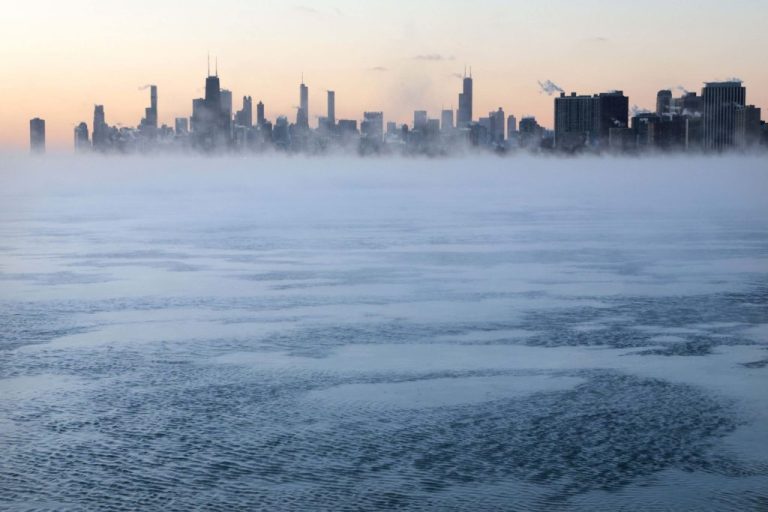Blisteringly cold Arctic air and extreme winter weather swept south through much of the United States in mid-January 2024, breaking daily low temperature records from Montana to Texas. Tens of millions of people were affected by frigid temperatures, and heavy snowfall and lake-effect blizzards had severe impacts throughout the Great Lakes and Northeast regions.
These extreme cold events occur when the Polar Jet Stream — the familiar jet stream in winter that runs along the border between the Arctic and milder air — descends deeply to the south, bringing cold Arctic air to areas not often exposed to it.
One interesting aspect of these events is that they often occur in conjunction with changes in another river of air above the jet stream: the stratospheric polar vortex, a large current of air moving around the North Pole in the middle of the stratosphere.
When this stratospheric vortex disrupts or expands, it can also distort the jet stream, pushing it south in some areas and causing outbreaks of cold air.
The Arctic Polar Vortex is a strong band of winds in the stratosphere, 10 to 30 miles above the surface. When this band of winds, which normally surround the North Pole, weakens, it can split. The polar jet stream can reverse this disturbance, becoming weaker or wavy. At the surface, cold air is pushing south in some locations. Image provided by NOAA
The January 2024 Arctic cold blast fits this pattern, as the polar vortex extended so far over the United States into the lower stratosphere that it roughly split in two. There are multiple reasons that may have led to this expansion, but it is likely related to the weather at high latitudes in the previous two weeks.
Surface temperatures and jet stream at 7 a.m. EDT on January 16, 2024, with the stratospheric polar vortex also visible in the dark blue line. Photo courtesy of Matthew Barlow/UMass Lowell, CC BY
No, cold does not interfere with global warming
Having just experienced the hottest year on record, it may seem surprising that so many cold records have been set. But does this cold snap conflict with human-caused global warming? As an atmospheric and climate scientist, I can tell you, categorically and unequivocally, that this is not the case.
Read more: “We're frankly amazed.” Why did 2023's record temperature surprise scientists?
No single climate event can prove or disprove global warming. Many studies have shown that the number of extreme cold events is clearly decreasing with global warming, as predicted and understood from physical reasoning.
Whether global warming, contrary to expectations, may play a supporting role in the severity of these events is an open question. Some research suggests it does.
Polar view of winds in the lower stratosphere at 7 a.m. EDT on January 16, 2024. The winds shown are located about 10 miles above the surface, in the lower stratosphere. Photo courtesy of Matthew Barlow/UMass Lowell
The February 2021 cold snap, which severely disrupted Texas' power grid, was also associated with an extended stratospheric polar vortex. My colleagues and I have provided evidence that changes in the Arctic associated with global warming have increased the likelihood of such vortex disturbances. The effects of enhanced high-latitude warming known as Arctic amplification on regional snow cover and sea ice may enhance weather patterns that in turn lead to an extended polar vortex.
More recently, we have shown that for large areas of the United States, Europe, and Northeast Asia, while the number of these extreme cold events is clearly decreasing—as would be expected with global warming—their intensity does not appear to be correspondingly decreasing, although weather changes. Rapid warming in their source areas in the Arctic.
So, while the world can expect fewer of these extreme cold events in the future, many regions need to remain prepared for exceptional cold spells when they occur. A better understanding of the forcing pathways between Arctic surface conditions, the stratospheric polar vortex, and mid-latitude winter weather will improve our ability to predict these events and their intensity.
This article is republished from The Conversation under a Creative Commons license. Read the original article.

